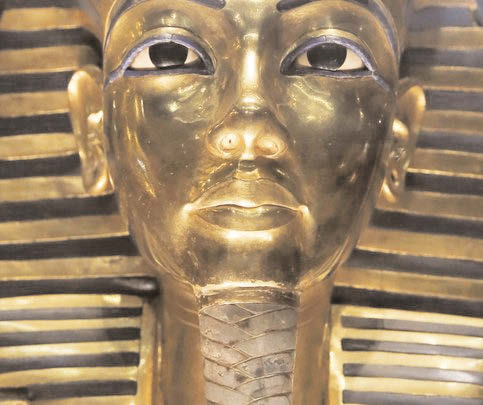
CAIRO (TIP): The iron blade of an ornate dagger buried in Egypt with King Tutankhamen probably came from a fallen meteorite, researchers have determined — a form of metal so prized by ancient Egyptians that they called it “iron from the sky.”
The dagger, which was discovered in the folds of the wrapping around the mummified boy king, has long intrigued historians and archaeologists for its great beauty — it has a gold and crystal handle, and an ornate sheath— and because ironwork was rare in ancient Egypt.
Using X-ray fluorescence spectrometry, Italian and Egyptian experts found that the blade’s composition of iron, nickel and cobalt was an approximate match for a meteorite that landed in northern Egypt. The result “strongly suggests an extraterrestrial origin” for the blade, according to their results published this week in the journal Meteoritics and Planetary Science.
The finding could add to secrets unlocked from an ancient tomb that is still a source of global fascination almost a century after its discovery by the English archaeologist Howard Carter in 1922. The dagger was found in 1925.
Earlier studies, in the 1970s and 1990s, examined whether the blade came from a meteorite but they were inconclusive or disputed. Newer technology allowed the Italian and Egyptian team, led by experts from Polytechnic University of Milan, the University of Pisa in Italy and the Egyptian Museum in Cairo, to perform new tests that, they say, appear to settle the matter.
Comparing the composition of the dagger with meteorites that landed within a radius of 1,250 miles, they found a close similarity with one that hit the seaport city of Marsa Matruh, 140 miles west of Alexandria, on the Mediterranean coast. That finding may help explain why, from the 13th century B.C., Egyptians started using a hieroglyph that translates as “iron from the sky,” the paper said.
“The ancient Egyptians, in the wake of other ancient people of the Mediterranean area, were aware that these rare chunks of iron fell from the sky,” it said.
The intense attention paid by experts to Tutankhamen’s tomb has not always been matched by staff members at the rundown Egyptian Museum. In January the government said eight people at the state-run museum were being disciplined for their role in a botched repair job that caused minor but lasting damage to King Tut’s golden burial mask. The repair job was an attempt to correct the damage caused by workers who had accidentally knocked the beard from the 3,300-year-old artifact in August 2014 as they repaired a light fixture in its display case. Tutankhamen has recently become the focus of renewed interest after a British Egyptologist, Nicholas Reeves, promoted a tantalizing theory that behind the king’s burial chamber lies the long-sought tomb of Queen Nefertiti. Other archaeologists, however, strongly dispute that idea, and say nothing of any significance is concealed in the walls of the burial chamber.




Be the first to comment